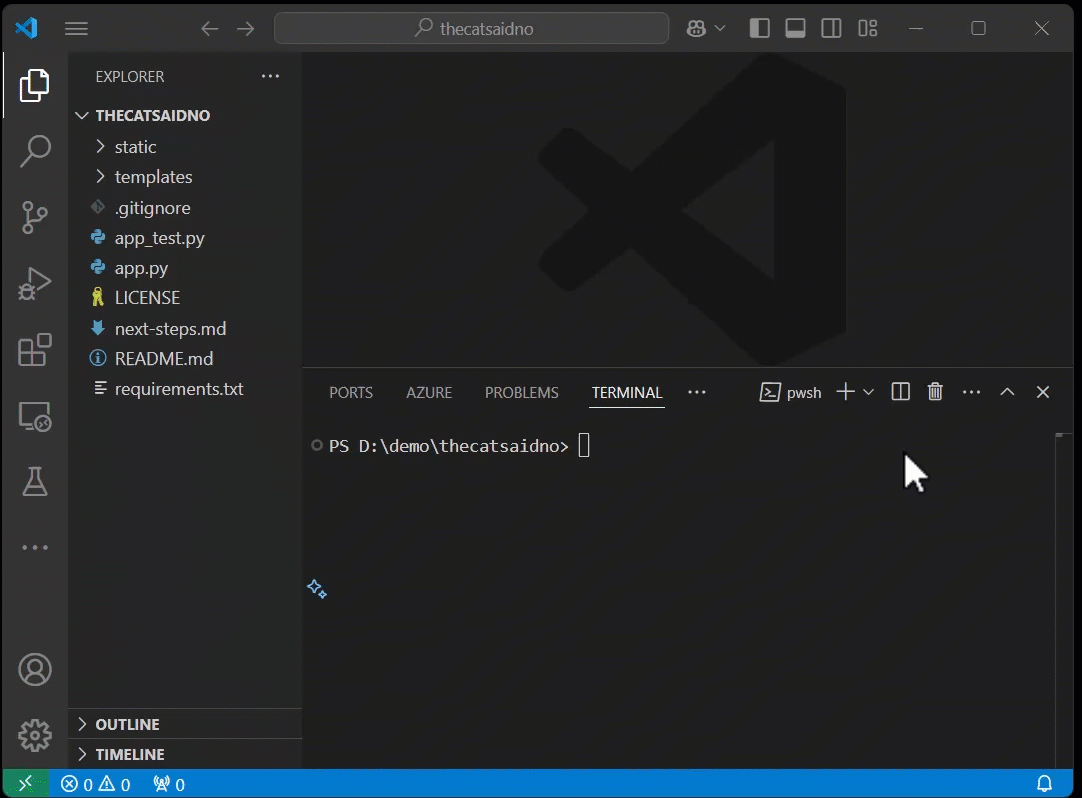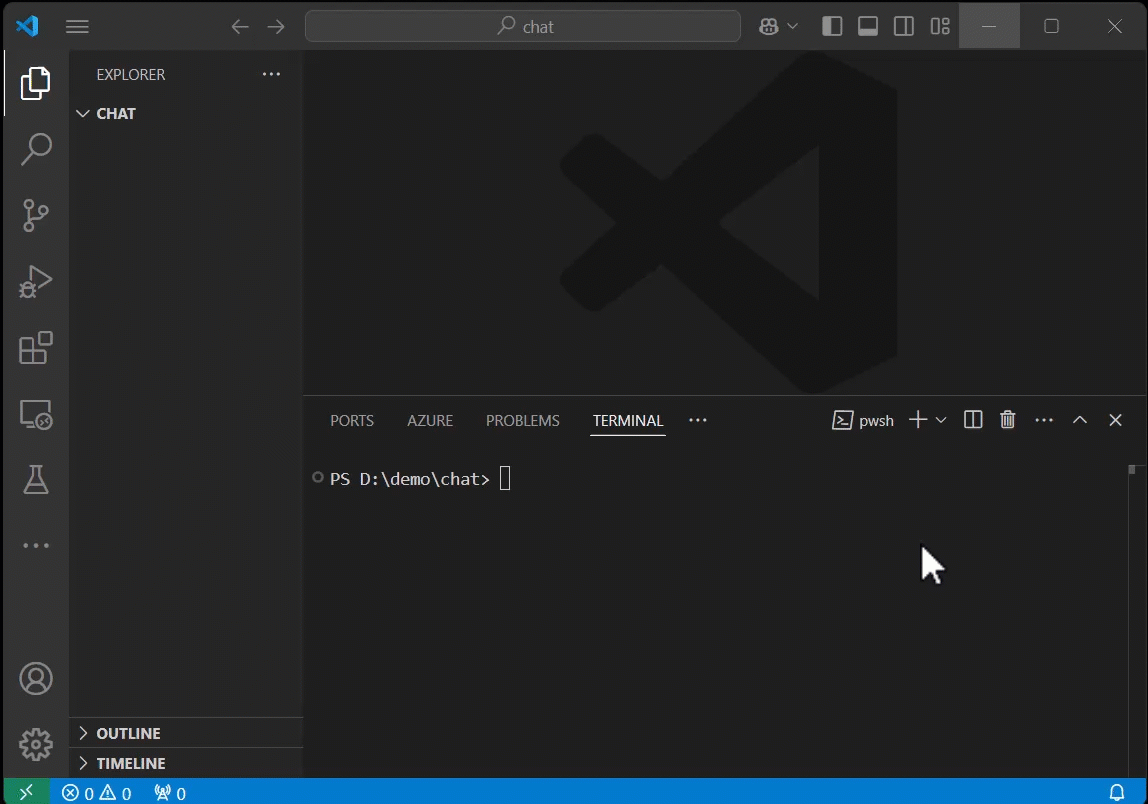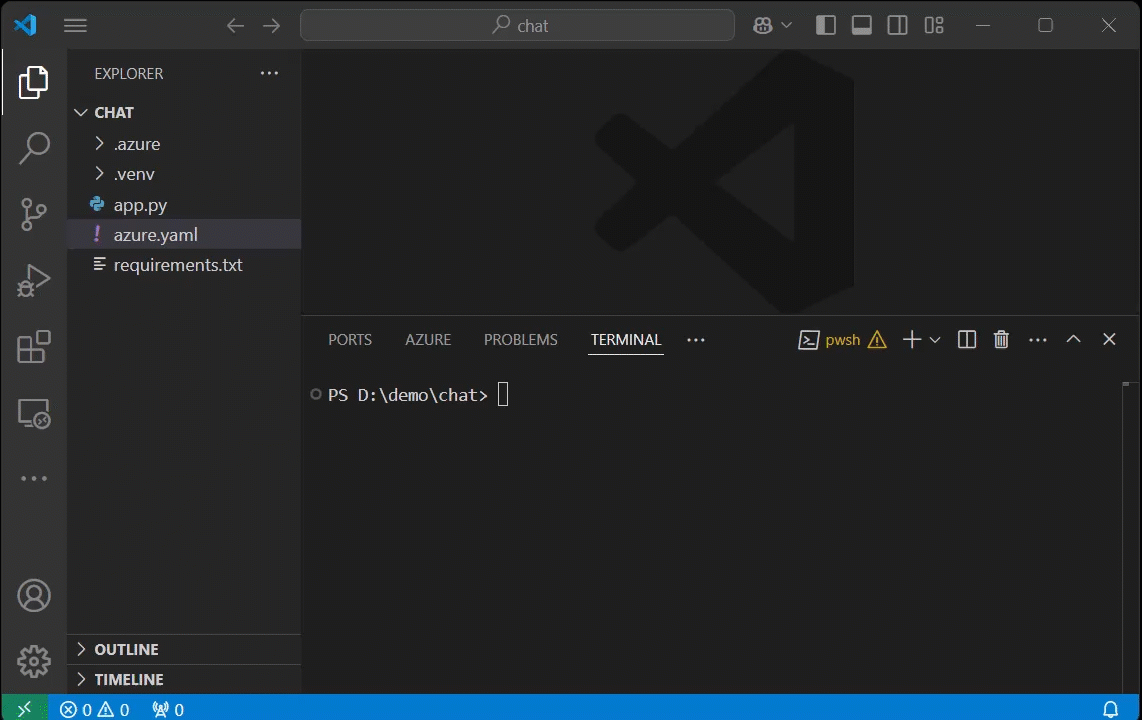This post announces the November 2024 release (version 1.11.0) of the Azure Developer CLI (azd). As always, you can learn about how to get started with the Azure Developer CLI by visiting our documentation.
This month, we’re heading to Microsoft Ignite showing the new template gallery. If you are there, stop by the azd demo session and the Pinecone booth where you can see the Pinecone + azd templates. In the meantime, we invite you to join our November release discussion on GitHub. We’re also welcoming community call guest signups. If you contributed to azd, made a template, or done anything else interesting using azd, you’re invited to join our livestream and show off your work.
Here’s what’s new with azd:
- New alpha command
azd add. (azure-dev#4527)
Compose your app with azd add
You can now compose and build up your apps by adding supported Azure components progressively using azd. This new feature is a dev-centric, guided, simplified experience for adding Azure resources to your project. We use Azure Verified Modules (AVM) when possible, providing recommended practices using building blocks for Azure that are secure by design.
Start from code
With azd composability enabled, start from your app code and with azd init you are prompted to start from a template or from your code base. Starting from the code base, you start with the simplified init flow, which generates the /infra folder. We modified simplified init so it can be modified.
After initializing your project, deploy your app to Azure Container Apps (ACA). Then run azd add to add a database. azd add takes you through adding a database—without writing a single line of Bicep code.

Start from scratch
You can also start by running azd init to initialize a minimal project and then run azd add to, for example, Azure OpenAI. You can focus on exploring and writing code. When you’re ready, add a host and deploy your app to ACA.

Getting the Bicep Code
Wondering about the Bicep code used to create the Azure services? When you’re ready to learn more, run azd infra synth and all of the Bicep code is in the /infra folder. Note: azd infra synth is also an alpha feature.

Supported Azure services
We build upon simplified init. For alpha, the target host is Azure Container Apps (ACA) only. We’re working on scaling azd composability so stay tuned for more update in future releases.
Currently supported Azure services for azd add:
- AI: Azure OpenAI (keyless access)
- Database: MongoDB, PostgreSQL, Redis
To enable azd composability, you can run:
azd config set alpha.compose on
Since azd composability support is considered an alpha feature, we only recommend using it for non-business-critical scenarios.
Other changes, enhancements, and bug fixes
We also added smaller enhancements and fixed issues requested by users that should improve your experience working with the azd. Some notable changes include:
Bugs fixed in azd:
- Fix environment variables to be evaluated too early for
main.parameters.json(azure-dev#4363) –(azure-dev#4524) Fix using parameters for .NET Aspire deployment.
Other changes:
- Contributions to ensure azd works with azure.dev/azure. Check out this livestream discussing the new preview release.
- Dev Center Environments Outputs API Integration. This update moves away from manually reading Azure deployment outputs to use the Outputs API directly from the Azure Developer Environments (ADE) team. This feature enables a seamless outputs experience across their supported runners including ARM, Bicep, Terraform, and other custom runners. (azure-dev#4512)
- Auto detect port from Dockerfile in
azd initfrom code (azure-dev#4454) - Simplified init Java app detection enhancements: maven multi-module projects, database dependencies (e.g., MySQL, PostgreSQL). (azure-dev#4437)
New Templates
New templates this month include:
- Spring Pet Clinic AI authored by Songbo Wang
- Java on ACA Quarkus Template authored by Jianguo Ma
- Azure Functions C# HTTP Trigger using Azure Developer CLI authored by Mike Morton
- Azure Functions Python HTTP Trigger using Azure Developer CLI authored by Thiago Almeida
- Azure Functions JavaScript HTTP Trigger using Azure Developer CLI authored by Mike Morton
- Azure Functions TypeScript HTTP Trigger using Azure Developer CLI authored by Mike Morton
- Azure Functions Java HTTP Trigger using AZD authored by Mike Morton
- Azure Functions PowerShell HTTP Trigger using AZD authored by Mike Morton
Do you have an azd template you’d like to share with the rest of the community? You can learn how to with our contributor guide.
You can use the Azure Developer CLI from:
- Your terminal of choice on Windows, Linux, or macOS.
- Visual Studio Code or GitHub Codespaces by downloading the extension from the Marketplace, or installing it directly from the extension view (
Ctrl+Shift+Xfor Windows orCmd+Shift+Xfor macOS) in Visual Studio Code. - Visual Studio by enabling the preview feature flag.
- You can learn more about the Azure Developer CLI from our official documentation.
- If you run into any problems or have suggestions, file an issue or start a discussion in the Azure Developer CLI repository. You can also try checking out our troubleshooting documentation.


0 comments